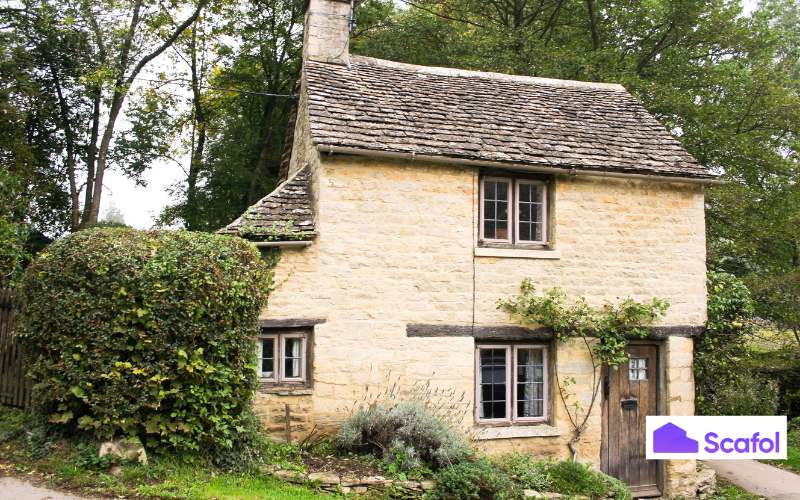
Being a surveyor and living in Cornwall, this is an area very close to my heart. When stepping into the role of a residential building surveyor, the ability to understand and adapt to your local area is more than just an asset—it’s a necessity. From historic cottages nestled in countryside hamlets to modern developments in urban sprawls, every region carries a unique architectural fingerprint shaped by vernacular design and construction techniques. Understanding this local flavour is critical to offering accurate assessments, insightful advice, and valuable services to your clients.
What Is Vernacular Design?
Vernacular architecture refers to the design and construction styles that are native to a specific region. These styles evolve over time in response to the local climate, available materials, cultural traditions, and economic conditions. For example:
- Cotswolds: You might find honey-coloured limestone cottages with steeply pitched roofs to manage rainfall.
- Devon and Cornwall: Cob and thatch construction is prominent due to the availability of clay soil and straw.
- Scotland: Stone-built homes with slate roofs reflect the rugged terrain and weather conditions.
Each vernacular style represents a harmony between the building and its environment. For surveyors, these styles are not just aesthetic quirks but key indicators of how a building will perform and age over time.
Why Knowing Your Area Matters
Material Knowledge
Different regions have distinct building materials. For example, buildings in coastal areas might incorporate marine-resistant materials like lime mortar, while rural structures may rely on timber frames. Understanding these materials helps you assess wear and tear, structural integrity, and potential issues like salt damage or woodworm.
Construction Techniques
Local building methods influence how properties are constructed and repaired. For example, wattle-and-daub walls found in some older properties behave differently from modern brickwork. A surveyor unfamiliar with such techniques might misdiagnose cracks or structural issues, leading to inaccurate reports.
Regulatory and Historical Context
In many areas, vernacular architecture often overlaps with heritage designations or conservation areas. Surveyors must navigate regulations tied to preserving these historical elements. An understanding of local planning laws and heritage protections is vital for offering sound advice to homeowners and developers.
Climate and Environmental Considerations
Local climate conditions—such as high rainfall, wind exposure, or coastal air—impact buildings in unique ways. A surveyor in the Highlands of Scotland, for example, will need to account for freeze-thaw cycles affecting masonry, while one in Cornwall must consider the corrosive effects of salt-laden air.
Benefits for Surveyors and Clients
Accurate Diagnoses
Surveyors with localized knowledge can provide precise evaluations, distinguishing between superficial issues and deeper structural concerns rooted in regional construction methods.
Credibility and Trust
Clients value surveyors who demonstrate a deep understanding of local architecture. This knowledge not only enhances credibility but also builds trust, positioning you as a go-to expert in your area.
Tailored Recommendations
From maintenance advice to repair solutions, local expertise allows you to offer practical, cost-effective recommendations. For instance, suggesting traditional lime plaster for a period property instead of modern cement-based alternatives preserves its permeability and longevity.
How to Build Local Expertise
- Research Historical and Vernacular Styles: Familiarize yourself with the prevalent architectural styles and materials in your area. Local libraries, heritage organizations, and online archives can be valuable resources.
- Engage with Local Builders and Craftsmen: Building professionals often have deep insights into traditional construction techniques and materials.
- Join Local Industry Groups: Networking with other surveyors, architects, and conservationists in your region can expand your understanding and keep you updated on area-specific challenges.
- Continuing Professional Development (CPD): Attend workshops, courses, and seminars that focus on vernacular architecture and building surveying.
- Field Experience: Spend time visiting various properties and construction sites to gain hands-on knowledge of local techniques and materials.
Conclusion
For a residential building surveyor, understanding your area is more than just knowing the lay of the land; it’s about immersing yourself in the region’s architectural DNA. Vernacular design and construction tell a story—of the land, its people, and its history. By embracing this story, you not only enhance your professional expertise but also ensure that every property you survey is evaluated with the respect, accuracy, and care it deserves. In doing so, you provide clients with the insights they need to make informed decisions about their homes, whether they’re preserving a piece of history or building for the future.

















 Book a Demo
Book a Demo